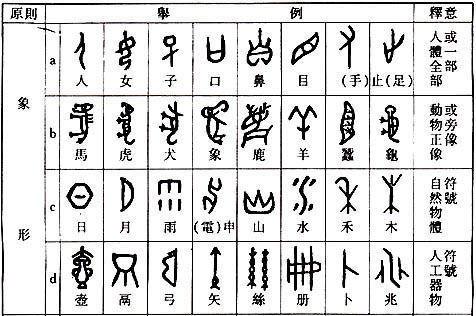Classification of Chinese Characters
2 min readIn view of formation,written Chinese is a script of ideograms.Xu Shen(c.58一c.147),in the Eastern Han Dynasty,was a distinguished scholar who had attained unparalleled fame for his etymological dictionary Explaining Single Component Graphs and Analyzing Compound Characters compiled between 100 and 121.5 In this book,Chinese characters are classified into six categories,namely pictograms,ideographs,logical aggregates,pictophonetic compounds,derived characters with extended usage,and phonetic loan characters.However,the last two are often omitted,for the characters of these categories have been created before but somehow borrowed to represent another meaning,or detached into separate words.Generally,Chinese characters fall into four categories in view of their origin.

·Pictograms:Pictograms are the earliest characters to create,and they usually reflect the shape of physical objects.For instance,the character looks like the sun;the moon;a hill;and,a running deer.From this picture-drawing method,the other character forming principles were subsequently developed.Over a long history,pictograms have evolved from irregular drawing into a definite form,most simplified by losing certain strokes to ease writing.However,only a very small portion of Chinese characters fall into this category,not more than 5%.
·Ideographs:An ideograph usually describes an abstract concept.It is a combination of indicators,or it adds an indicator to a pictograph.For example,a short horizontal bar on top of a circular arc represents an idea of up or on top of.Another example,placing an indicative horizontal bar at the lower part of a pictogram for wood,makes an ideograph for “root.”Like pictograms,the number in this category is also small,less than 2%.
·Logical Aggregates:It is a combination of pictograms to represent a meaning,rather like telling a little story.A pictograph for person on the left with a pictogram for wood on the right makes an aggregate for“rest.”This story-telling formation is relatively easier to learn,yet most aggregates have been reformed into phonetic compounds,or just replaced by them.
·Compounds:Also called-semantic-phonetic compounds,just as the name implies,it combines a semantic element with a phonetic element,taking the meaning from one and the sound from the other.For instance,the character for ocean with a pronunciation of yang is a combination of a semantic classifier which means”water”with the phonetic component yang,referring to goat or sheep on its own.This last group of characters is the largest in modern Chinese,making up around 90%of all Chinese characters.
The superiority of phonetic-compounds over the first three categories lies in its unique phonetic components,for many an object and concept are hard to express through photographsor ideograms,and its association with the character pronunciation helps Chinese vocabulary extend much faster than logical aggregates.Therefore,most newly created characters take this more scientific formation approach.








